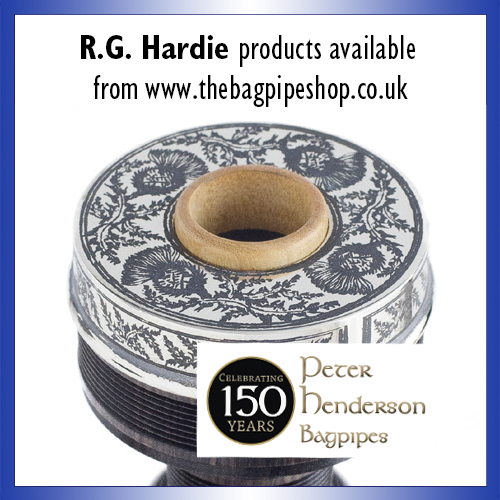• From the December 2003 Piping Times.
By Keith Sanger
The exact origins of the pipe band comprising pipe and drum corps is still to be determined but the following entry from the Edinburgh Courant of the 3rd November, 1803 provides at least one firm reference point in the story.

“At nine o’ clock the Loyal North Britons entered at Oxford Street gate, their Kettle-drums and bag-pipes playing the old tune of Over the hills and far away”.
It is taken from a long account of a military review held in Hyde Park, London, a week or two earlier and although brief it does provide quite a lot of information, apart from the music it is clear that the pipes and drums (or should it really be the Drums and Pipes as the Gordon Highlanders have it?) were being played on the move. The term ‘North British’ with addition of a regimental number was at that time normally applied to the Scottish militia regiments and I suppose, given that the events of 1745/46 were still within living memory, that the appellation ‘Loyal’ was a recognition that some Scots were still not enthusiastic ‘North Britons’.
In this case, given that the parade took place in London, the specific regiment involved was probably the Highland Armed Association of London (or Loyal North Britons) raised in 1793 and again in 1803. The force was disbanded in 1816 and is usually regarded as a forerunner of the London Scottish Rifle Volunteers formed in 1859. It was about five years before this date that regimental pipers had received War Office recognition and although there are reams of official army records prior to this, pipers did not officially exist. However, in reality, they certainly did, as any trawl through the regimental records, usually to be found among the family papers of the founding patron and colonels demonstrates.
How many pipers could be fielded by one of these regiments is hard to determine. A number of pipers described as “pipe or piper major” or “piper to” specified regiments can be found and given that they had no officially recognised rank it is likely that these both referred to the principle piper in the named regiment.
A reference among the Campbell of Breadalbane papers relating to the raising of the Breadalbane Fencibles in 1793 says that they were to have two pipers to each Grenadier Company (SRO GD 50/18), which matches the normal official establishment of two fifers and two drummers per company. According to the Highland Society Competition Records for 1793, John MacGregor, who won first prize, was “Piper to the Breadalbane Fencibles” while the Breadalbane family records describe him as Pipe Major (SRO GD1I2/1115/2/10).


